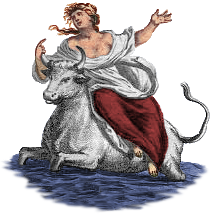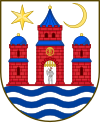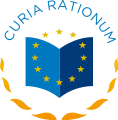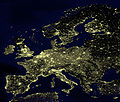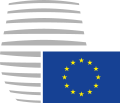Portal:European Union
Introduction
The European Union (EU) is a supranational political and economic union of 27 member states that are located primarily in Europe. The Union has a total area of 4,233,255 km2 (1,634,469 sq mi) and an estimated total population of over 449 million. The EU has often been described as a sui generis political entity combining the characteristics of both a federation and a confederation. Containing 5.8% of the world population in 2020, EU member states generated a nominal gross domestic product (GDP) of around US$16.6 trillion in 2022, constituting approximately one sixth of global nominal GDP. Additionally, all EU states except Bulgaria have a very high Human Development Index according to the United Nations Development Programme. Its cornerstone, the Customs Union, paved the way to establishing an internal single market based on standardised legal framework and legislation that applies in all member states in those matters, and only those matters, where the states have agreed to act as one. EU policies aim to ensure the free movement of people, goods, services and capital within the internal market; enact legislation in justice and home affairs; and maintain common policies on trade, agriculture, fisheries and regional development. Passport controls have been abolished for travel within the Schengen Area. The eurozone is a group composed of the 20 EU member states that have fully implemented the economic and monetary union and use the euro currency. Through the Common Foreign and Security Policy, the union has developed a role in external relations and defence. It maintains permanent diplomatic missions throughout the world and represents itself at the United Nations, the World Trade Organization, the G7 and the G20. Due to its global influence, the European Union has been described by some scholars as an emerging superpower. In 2012, the EU was awarded the Nobel Peace Prize. The United Kingdom became the only member state to leave the EU, in 2020; ten countries are aspiring or negotiating to join it. (Full article...) Selected article The Treaty of Lisbon or Lisbon Treaty (initially known as the Reform Treaty) is an international agreement which amends the two treaties which form the constitutional basis of the European Union (EU). The Lisbon Treaty was signed by the EU member states on 13 December 2007, and entered into force on 1 December 2009. It amends the Maastricht Treaty (also known as the Treaty on European Union) and the Treaty establishing the European Community (TEC; also known as the Treaty of Rome). In this process, the Rome Treaty was renamed to the Treaty on the Functioning of the European Union (TFEU). Prominent changes included the move from unanimity to qualified majority voting in several policy areas in the Council of Ministers, a change in calculating such a majority to a new double majority, a more powerful European Parliament forming a bicameral legislature alongside the Council of ministers under the ordinary legislative procedure, a consolidated legal personality for the EU and the creation of a long-term President of the European Council and a High Representative of the Union for Foreign Affairs and Security Policy. The Treaty also made the Union's bill of rights, the Charter of Fundamental Rights, legally binding. Selected picturePhotograph: David Iliff The Chapel of the Gate of Dawn is a Catholic chapel and pilgrimage site on the city gates of the Lithuanian city of Vilnius. It is home to Our Lady of the Gate of Dawn, a painting of the Blessed Virgin Mary in the Northern Renaissance style. In this image, the painting is covered in expensive and elaborate silver and gold clothes, leaving only the face and hands visible.
Legend tells that in 1702, when Vilnius was captured by the Swedish army during the Great Northern War, Our Lady of the Gate of Dawn rescued the city: at dawn, the heavy iron city gates of the gate fell, killing four Swedish soldiers and promoting a successful Lithuanian counter-attack near the gate.
Did you know?...that Monaco, San Marino, and Vatican City all mint their own euro coins, with their own national symbols on the back, despite not being EU members? Selected cityCopenhagen is the capital of Denmark and the country's largest city (metropolitan population 1,211,542 (2006)). It is also the name of the adjacent county. Copenhagen is the seat of the national parliament, the government, and the monarchy. The original designation for the city, from which the contemporary Danish name is derived, was Kjøbmandehavn, "merchants' harbor". The English name for the city is derived from its German name, Kopenhagen. The element hafnium is named after the city's Latin name, Hafnia. Copenhagen was founded around year 1000 by Sweyn I Forkbeard and his son Canute the Great. It was only a fishing village by the name of "Havn" (harbour) until the middle of the 12th century when it grew in importance after coming into the possession of the Bishop Absalon, who fortified it in 1167. The excellent harbour encouraged Copenhagen's growth until it became an important centre of commerce. It was repeatedly attacked by the Hanseatic League as the Germans took notice. In 1254, it received its charter as a city under Bishop Jakob Erlandsen. General imagesThe following are images from various European Union-related articles on Wikipedia.
TopicsFeatured contentFeatured articles
Featured lists
Featured contentGood articles
CategoriesRelated portalsAssociated WikimediaThe following Wikimedia Foundation sister projects provide more on this subject:
Discover Wikipedia using portals |



